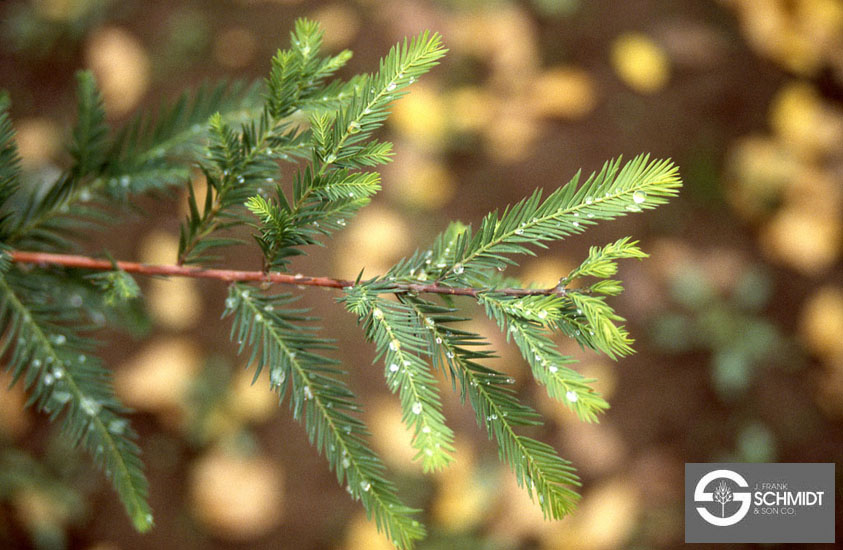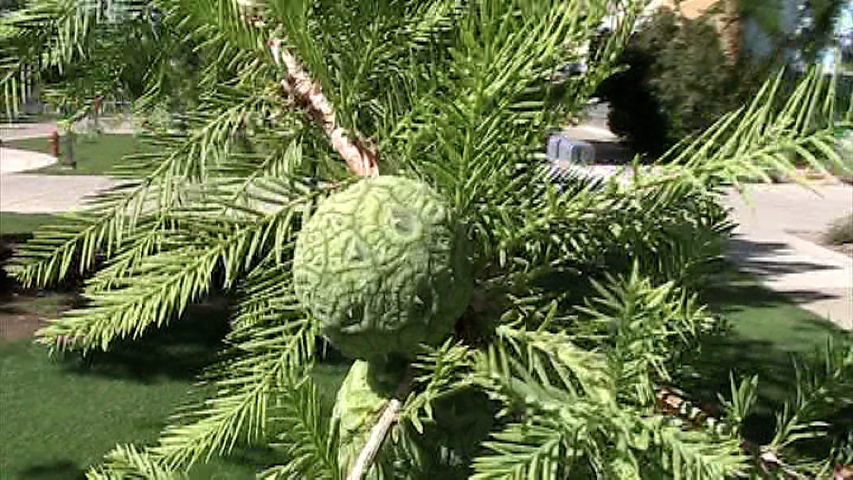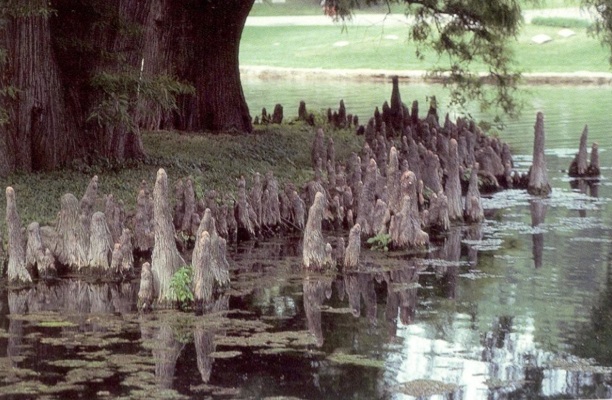| PSC 2620: Woody Trees and Shrub | Course Home | Week 7 |
Taxodium distichum - Common Baldcypress
Plant Viewer
 |
 |
| The flat needles are arranged on either side of the branchlet. The needles are a brigh pale green. | The round seed pod is green on the tree. It will turn brown and open in the fall. |
 |
 |
| The trunk has a brownish-red color and it exfoliate in strips. | In wet conditions the trees root system will produce woody knees that project above the soil and water to allow the tree to breath. |
Plant Description
Taxodium distichum, or Common Baldcypress, is a tall deciduous conifer. It grows 50-70 feet tall and 20-30 feet wide. It has a conical form when young, but can develop a more spreading and flat-topped when old. It prefers to grow in moist soil, and is perfectly happy to grow in swampy soil. Where the soil is consistently wet the tree can develop knobby surface root projections called knees. The bark is a reddish brown color with a fibrous texture.
The needles are arranged on either side of a tender center stem called a branchlet. The needles are flat and pale green in color. They are 1/3 to 3/4 inches long. In the spring the needles may be blushed with a yellow color. In the fall the needles turn an orange color before dropping. Many people mistakenly believe the Baldcypress is sick and dying when the needles turn color and begin to drop in the fall.
One inch globular cones form on the tree and ripen in a single year. The cones are green when young, and then turn brown when they open. When closed, the cone looks like an unusual sports ball, with irregular plates and visible seams crisscrossing its surface.
Landscape Use
Use in extremely moist areas, such as lowlands, marshes and riparian areas. A good choice for parks and other large properties where.